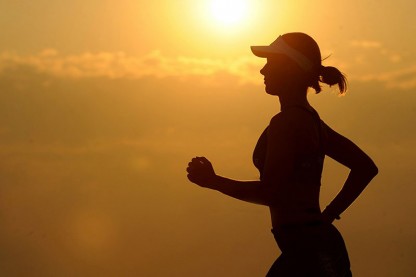The Female Athlete Triad: The Connection Between Low Energy, Menstrual Irregularities, and Low Bone Mass
Identifying symptoms of the female athlete triad and correcting the problem is vital to maintaining good bone health later in life.
 Participating in athletics is a great way to stay active and get plenty of regular exercise. But pushing yourself too hard with physical activity has its consequences, too. Women, in particular, are at risk for several specific health problems when this occurs.
Participating in athletics is a great way to stay active and get plenty of regular exercise. But pushing yourself too hard with physical activity has its consequences, too. Women, in particular, are at risk for several specific health problems when this occurs.
Female athletes often experience three interrelated conditions called the female athlete triad that are associated with poor bone health and increased risk for injury. Identifying symptoms of the triad and correcting the problem is vital to maintaining good bone health later in life.
What is the female athlete triad?
The female athlete triad describes a collection of conditions commonly experienced by female athletes (although athletes and non-athletes alike can be affected). The three factors making up the triad include:
- low energy availability
- menstrual dysfunction
- poor bone health.
Low energy availability is caused by an imbalance between energy intake and energy expenditure
Athletes commonly experience this imbalance because they may not eat enough to make up for all the energy they lose doing high intensity and frequent workouts. This leads to depleted energy levels, which often serve as the source for the other two symptoms.[1]
When the body does not have enough energy, both the reproductive system and the skeletal system are affected. An energy deficit can cause low levels of hormones like leptin, estradiol, and insulin-like growth factor. These hormonal disruptions can impair reproductive function as well as bone formation.[1,2]
Nutritional deficits that often occur with the triad can also lead to deficiencies in calcium, vitamin D, vitamin K, vitamin C, magnesium, and iron. These important nutrients are vital for overall health, and in particular bone health.[1,2]
Too much exercise can lead to low bone density
Weight loss due to low energy availability as well as irregular or nonexistent periods due to menstrual dysfunction can be easy to identify because they have noticeable effects. The effects on bone health, however, can develop silently, without any major symptoms.[1]
But the effects of the triad on bone health can be devastating. Did you know that for most women, 90% of peak bone mineral density is reached by 18 years of age? And that after your 20s, whatever bone density you lost when you were younger cannot be regained?
After your peak bone density is reached, it can only be lost or maintained.[3] For this reason, it is imperative to make sure women are doing everything they can to build strong and healthy bones, especially if they are athletes.
The link between the female athlete triad and injuries
While bone loss may slowly develop unnoticed, the effects of that bone loss can cause major problems for women. In one study, the risk for bone stress injuries increased from between 15% and 20% for women with one of the three triad symptoms to between 21% to 30% for women with two of the three symptoms. And the risk for injury was even higher for those with all three symptoms, between 29% to 30%.[2]
In another study on women participating in interscholastic cross country and track, irregular or missing periods and low bone mineral density were both associated with increased risk for injuries.[4]
How to prevent bone-related injuries
If you or another woman you know is an athlete, be sure to keep an eye out for symptoms of the female athlete triad. Remember to look for imbalances between energy input and energy output, irregular or missing periods, and low bone density scores.
While most young women don’t yet need to check their bone density, those who are serious athletes, who are low in weight, or who are experiencing symptoms of the triad may benefit from screening tests, because they are at a higher risk for poor bone health and injuries. To read more about bone density testing and scores, go here.
If you and your doctor determine that your scores are low, you may need to make some lifestyle changes to improve your bone health. Increasing caloric intake and decreasing energy expenditure may be the first necessary steps to take. Supplementing with calcium, magnesium, and vitamin D will also help.[1]
To prevent bone density loss in the first place, female athletes must take precautionary measures. Be sure to get enough vitamin D and calcium in your diet (to read about the best foods for bone health, go here). Participating in resistance training and weight-bearing exercises also helps keep your bones strong, so try to vary your workout routine.[1]
Don’t wait until it is too late to worry about your bone health; start taking action now to prevent low bone density, fractures, and osteoporosis.
Share your experience
Are you an athlete? Have you ever experienced any of the health problems associated with a rigorous training schedule? Share your experience in the comments section below.
[1] Int J Womens Health. 2014 May 3;6:451-67.
[2] Am J Sports Med. 2014 Apr;42(4):949-58.
[3] J Am Acad Orthop Surg. 2015 Jul;23(7):424-32.
[4] Int J Sports Phys Ther. 2014 Dec;9(7):948-58.
Originally published in 2015 and updated.


 Bone Spurs on the Spine
Bone Spurs on the Spine  Knee Injections for Osteoarthritis Pain Relief
Knee Injections for Osteoarthritis Pain Relief  What Is a Slipped Rib?
What Is a Slipped Rib? 